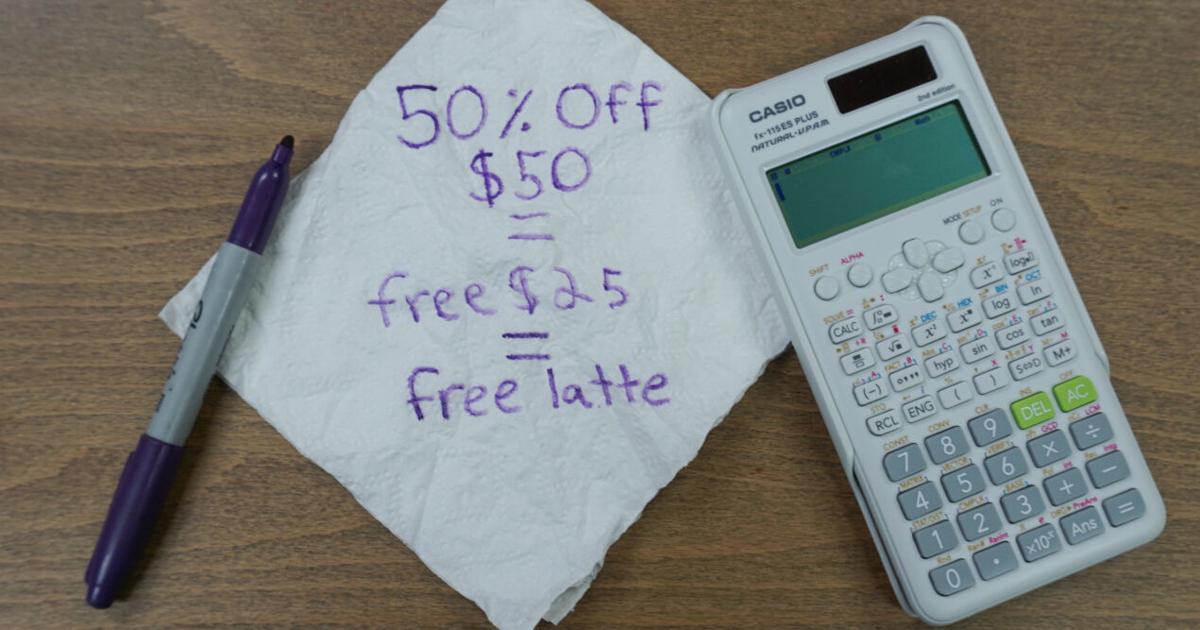
Have you ever felt like you just hit a small jackpot after finding a “free” $20 bill in your purse after assuming it was already long gone, or paying for something in cash, making it feel “free?” If so, you’ve participated in “girl math.”
Girl math is a method used to justify frivolous purchases like Halloween decor or a new pair of Uggs. The term began trending on TikTok, especially amongst girls and women, explaining their girl math. The search for the term on the app has now racked up 1.2 billion views.
Girl math says if you make a return and get money back, that’s basically a surplus of money. Or, if you spend less than $5 on something it’s basically free.
But what does all this justification do to our mental health?
Mohammad Habibi, associate professor of marketing at Cal State Fullerton, said it’s a difficult question to answer because it’s hard to tell if girl math impacts people’s behavior or if people on social media are projecting the trend.
Trends go viral because people resonate with them, Habibi explained.
“If this becomes like it has, a big trend, it can impact some people’s behavior as if now people can justify their shopping or have more spending or less spending on some discretionary purchases,” Habibi said.
Habibi added the danger of girl math lies within the potential for normalization.
“As long as you don’t take it too seriously and it doesn’t become a norm as a way to justify something,” he said.
Habibi said he spoke to his class about girl math and that everyone, especially women, had a take on it.
For some people, their take on girl math is that it can be a way to lessen the emotional blow of pricey purchases.
Diana Espinoza, a junior sociology major, gets her nails done every three weeks. To make an appointment, she has to send a $20 deposit to secure her spot. Her girl math says that the deposit does not count as part of her total.
“What I got charged at the moment when I got my nails done is what I think my nails cost, instead of adding the $20 of the deposit,” Espinoza said.
Perception is everything when it comes to using girl math and despite noting the dangers, Habibi sees the humor in girl math.
“I think everybody has some expenses that we need to somehow justify,” Habibi said.
Habibi admitted that he has even used girl math. He recalled that he recently didn’t go out with friends and was instead able to use the money he didn’t spend on an expensive dinner on a pair of shoes.
Espinoza said she uses girl math to justify fun purchases like Starbucks, clothes or going out to grab drinks.
“It’s definitely more of something that I use for personal stuff instead of bills or anything like that,” Espinoza said.
Habibi urges consumers to learn to make themselves less vulnerable to techniques companies use, such as marketing tactics such as sales and specials like “buy one get one free.”
“People and customers should only focus on the value that they get as opposed to the price they pay,” Habibi said.
Espinoza said the mental gymnastics of girl math actually improves her mental health in regards to spending money.
“I feel like it helps only because I don’t feel as guilty spending stuff on myself. It just kind of helps putting it in that perspective that I’m technically not spending my money,” Espinoza said. “It’s a free money kind of thing.”
The bottom line is to, within reason, spend your money on things you want and find value in, and maybe even have fun with the trend.
